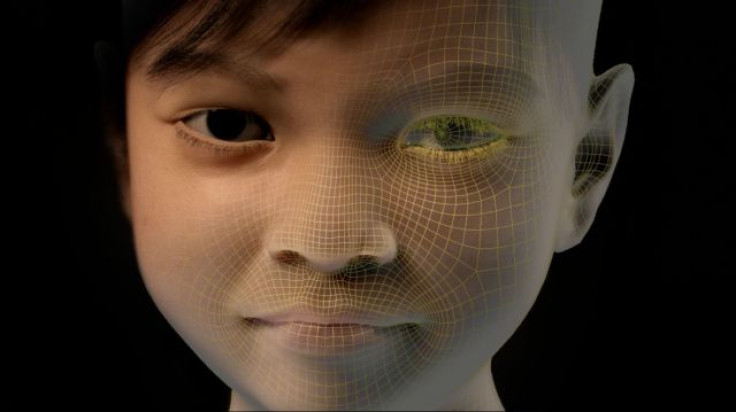'Sweetie 2.0' Software Uses Virtual Girl To Lure Child Porn Offenders Out Of The Dark

Right this moment, no matter when you’re reading this, there are at least 700,000 people online across the world browsing child pornography, according to research estimates. No one is exactly sure how many people in total view images of victimized children, nor is there a standard operating procedure for investigators trying to stop images of abused children from spreading. That could all change, though, now that a team of Dutch researchers is at work on a new way to identify suspected predators and bring them out of the dark.
Meet Sweetie 2.0, a computer-generated image of a fictional child that will be utilized to help international police agencies identify and apprehend suspected child pornographers and online predators. Child pornography is traditionally transmitted via peer-to-peer (P2P) networks from which multiple users download images or video from a single host. Police can infiltrate these P2P networks and record each of the IP addresses involved, or they can stamp known images with an identification code that allows them to track across which networks an image travels.
But those techniques have still failed to stop millions of Internet users from accessing illegal material. “Police are only looking for images they know,” Janis Wolak, a senior researcher at the Crimes Against Children Research Center of the University of New Hampshire, said. “But there are millions and millions of images.”
That’s where Sweetie comes in. Terre des Hommes, a Dutch humanitarian group that aims to protect children across the world, utilized pictures of the virtual girl to identify more than 1,000 adult suspects over two months in 71 countries.
Bait And Switch
The Sweetie account would sit in a chat room and wait to be contacted by individual predators. After some innocuous get-to-know-you chatting -- the actual communication was done by researchers posing as the girl -- the suspects would often offer to pay Sweetie to perform sexual acts via webcam. The Sweetie software was so advanced that, once the webcam was open, it appeared realistic enough to convince predators to volunteer enough information about themselves for police to find and arrest them.
The conversation immediately ceased once the perpetrator offered to pay for sex acts.
Of the approximately 20,000 suspects who contacted Sweetie, 254 were American. Forty-six people in Australia were arrested in connection with the operation, though only one has been convicted. Information about the other pending cases wasn't immediately clear.
Terre des Hommes announced last week it’s working with researchers at Tilburg University to create Sweetie 2.0, an updated version of the software that will be used not just for two months but for years. Tilburg’s Stefan Bogaerts, a professor of clinical forensic psychology, said the new version of Sweetie will cast a wider net than its predecessor and try to track suspects as they move among the estimated 45,000 illicit chat rooms located around the world. While viewers don’t adhere to any uniform stereotype, they tend to break down into the curious downloaders and viewers, distributors and creators, and hard-core criminals, Bogaerts said.
“The method we developed aims to trace the groups of curious downloaders and make them aware they are performing a punishable behavior. Some of them will stop, but others will continue. They will receive advice and information about mental health organizations and legislation,” he said.
To Catch A Predator
Sweetie 2.0, while interacting with a perpetrator, will also capture webcam images and use what’s known as the “catch-recatch method” to detect if a single user is trying to disguise himself by using multiple accounts or email addresses.
For now, cooperation between the researchers and American police appears to go no further than a revelation from Hans Guyt, head of special projects at Terre des Hommes, that U.S. police have inquired about how Sweetie was developed. U.S. law enforcement does not appear to have investigated the tips on the 254 individuals implicated in the first sting.
Sweetie 2.0 is still under development, with researchers expecting the test phase to be underway within 10 months. Terre des Hommes is consulting with psychologists, lawyers and police to determine the best way to use this technology ethically and legally.
What’s already clear is that, despite all the gains in online policing, there is still a dire need for a clear enforcement strategy to curb the distribution of graphic images of minors. “There are child pornography images and/or videos that are a part of a 'series,' so child pornography users will often network with others in order to obtain images and/or videos that they are missing from the series in order to complete their collection,” Kathryn Seigfried-Spellar, a professor of criminal justice at the University of Alabama, said via email. “There are other tactics being used by law enforcement, including posting ads on Craigslist and/or Backpage and setting up honeypot stings in order to catch child pornography users.”
Child porn laws also vary between countries, a disparity that researchers have tried to address. The United States, for instance, prohibits virtual child pornography in which the object is “indistinguishable” from a real-life victim. Terre des Hommes insisted that arrests made in the first “Sweetie” operation were based solely on information volunteered by the suspects after they made contact with Sweetie in a chat room and offered to pay for simulated sex.
First Contact
That last point -- namely, that suspects make first contact -- could be enough to convince a judge that the researchers aren't entrapping suspects. It's been enough in U.S. cases, at least, where judges have consistently ruled that the onus is on a defendant to prove they wouldn't have been in the same situation regardless of police involvement. Most arrests on the NBC show “Dateline,” in which investigators pose as minors, result in guilty pleas.
Interpol released a statement after the first Sweetie sting indicating that it is taking a more conservative approach, which could explain why so few arrests have been reported.
"Whilst Interpol recognizes the important role of NGOs in child protection, it is important that any criminal investigations should only be undertaken by law enforcement professionals," the police agency said. "This ensures that inquiries are conducted by individuals specifically trained in investigating these types of crime and that any evidence gathered is in accordance with national legislation and can therefore be submitted to the courts."
At least 22 current and former federal, state and local government employees in the U.S. have been convicted of a series of sexual and violent crimes against children over the past decade, according to a Daily Beast report published this week.
Exactly how much of the broader population engages in this kind of activity remains unclear, though Seigfried-Spellar said that in the process of surveying general Internet users, she “consistently found that 1 out of 10 people will admit to searching for, viewing, downloading, and/or exchanging Internet child pornography. But, again, this is just an estimate and more research is always needed.”
The video included below provides a short overview of the first Sweetie:
© Copyright IBTimes 2024. All rights reserved.











